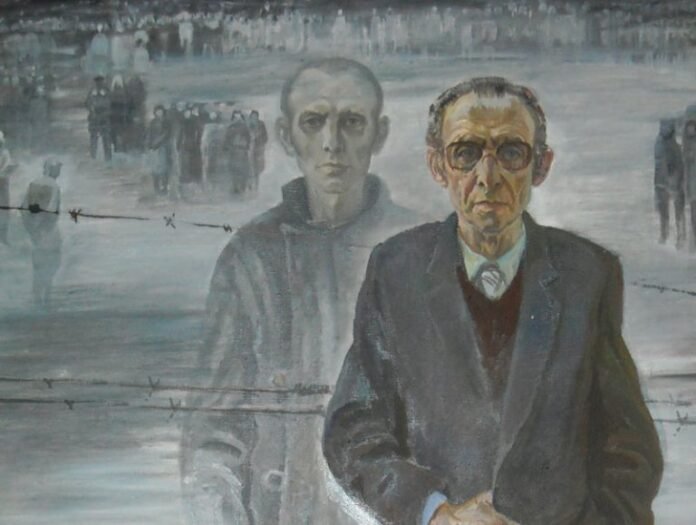Out in paperback later this month, read an extract from Stephen F. Cohen’s critically acclaimed The Victims Return, providing a powerful narrative of the survivors of the Gulag after Stalin, from their liberation and return to Soviet society to their long struggle to salvage what remained of their shattered lives and to obtain justice.
‘Now those who were arrested will return, and two Russias will be eyeball to eyeball: The one that put people in the camps and the one put there.’
Anna Akhmatova
Joseph Stalin’s era of terror in the Soviet Union has earned the moniker “the other holocaust,” and rightfully so. Over its twenty-four-year span, more innocent individuals—men, women, and children—perished than in Hitler’s extermination of the European Jews. Many assumptions have been made about survivors of Stalin’s terror—regarding their health, psychology, families, and politics—but few, if any, hold true. Lives after the Gulag were as diverse as the human experience itself.
Some victims were so shattered by their ordeals that they succumbed within weeks or months of their release—dying “from freedom,” as it was grimly put. Some perished on their journey home, whether on a train, at a railway station, or on a street. A handful dropped dead in the camps shortly after being informed of their impending release but before the scheduled day of freedom. One such tragic case involved a middle-aged man who endured fifteen years in Kolyma with the hope of reuniting with his elderly mother, who outlived him. For these survivors of Stalin’s regime, there was no life after the Gulag, no return.
However, others defied the odds, enjoying remarkably long lives despite their harrowing pasts, particularly considering the average male lifespan in Russia, which even today falls short of sixty years. Anna Larina lived into her early eighties, Vladimir Bukharin, brother of Nikolai Bukharin, lived to eighty-eight, and novelist Aleksandr Solzhenitsyn passed away in Moscow in 2008 at the age of eighty-nine. Some even reached their nineties, including Olga Shatunovskaya, a Shvernik Commission activist, Sergey Snegov, and the renowned film and television actor Georgy Zhzhenov. Anton Antonov-Ovseyenko, a friend of mine, and philosopher Grigory Pomerants, who was Shatunovskaya’s confidant after her expulsion from Party headquarters, remained active in Moscow at the age of ninety in 2010.
The extraordinary longevity of these individuals lacks a single explanation. It could be attributed to exceptional genetics among those I encountered or studied. Alternatively, it might be viewed through a Darwinian lens: having survived the Gulag, subsequent challenges seemed trivial. Or perhaps they shared the mindset of Lev Gumilyov, who declared, “The years in camp don’t count; it’s as though I didn’t live them,” and resolved to make up for lost time after their release.
The psychological aftermath of the Gulag varied significantly among returnees. Some remained perpetually haunted, concealing their past and avoiding discussions even with family, living as submissive Soviet citizens. Their fear of their own thoughts and the dread of rearrest left them feeling more imprisoned mentally than during their forced labor. Even esteemed memoirists of the Gulag, like Eugenia Ginzburg and Varlam Shalamov, couldn’t entirely escape its shadow. Ginzburg destroyed a “much sharper” draft of her renowned book out of fear it would be discovered, while Shalamov, though producing the most unflinching accounts in his Kolyma Tales, appeared “frozen by his experience… like a blackened tree struck by lightning, which will never again become green.”
However, some returnees also embraced their past as “professional zeks” (a Russian slang for a prison or forced labor camp inmate), wearing their camp experiences as badges of honor. They maintained lifelong bonds with fellow Gulag comrades and spoke out because, in their words, “they could not do otherwise.” Lev Gumilyov effortlessly assumed “his legendary zek pose” and recounted the story of “my Golgotha.” Sergey Snegov, a Communist truth-teller, responded in kind when confronted by a hostile Party official, declaring, “I am from Kolyma!” Anton’s years in the Gulag remained the defining aspect of his defiant identity. Even a poet adopted the pen name “Vladimir Zeka.” For them, like Solzhenitsyn, the question of whether to conceal their past or to embrace it proudly never arose. (When summoned by the KGB in 1974, already a renowned Soviet author, Solzhenitsyn showed up in his old Gulag attire. Told that “the masquerade isn’t necessary,” he was then dressed in a new suit and deported to West Germany.)
On the other hand, many returnees neither lived in constant fear nor displayed unwavering boldness. This was especially true for those still young enough to harbor professional ambitions or those concerned about further stigmatizing their children. Aleksandr Bayev exemplified this. After his return in the 1950s, he ascended to the pinnacle of the Soviet Academy of Sciences without outwardly acknowledging his seventeen years in the Gulag, confiding only in close friends and trusted colleagues. A man of decency and tolerance, he strongly opposed dissident activities, viewing them as jeopardizing what he had “suffered to achieve,” much like Bukharin’s historian daughter who disapproved of her half brother’s public protests in the 1970s. When Bayev finally shared his Gulag narrative four decades later, shortly before his death in 1997, it surprised more people than not.
The vast majority of survivors simply melded back into the anonymity of society, but a significant number, akin to Bayev, went on to illustrious Soviet careers. Although largely unknown at the time, there were precedents even under Stalin, particularly among zeks released to fight in the war against Nazi Germany. Konstantin Rokossovsky, released along with several other military officers arrested in 1937–38, endured torture by the NKVD (the Soviet Union’s secret police) yet emerged as one of the most accomplished and admired wartime generals, eventually rising to the rank of marshal. Another freed general, Aleksandr Gorbatov, led his army to Berlin, where he assumed leadership of the Soviet occupation forces in 1945. (Coincidentally, his former cellmate held the same position in Vienna.)
The return of the rocket engineer and designer Sergei Korolev during wartime was equally momentous. Freed to contribute to the development of weapons against Nazi Germany, he later spearheaded the Soviet space exploration program. Hence, considering the Soviet Union’s pioneering role, Korolev, a former Gulag inmate, may rightly be hailed as the father of space travel. He was not alone in his achievements. His colleague V.P. Glushko, who aided Korolev’s release in 1942 following his own liberation, made significant contributions to international astronomy, with a moon crater named in his honor. (Unlike Korolev, whose work remained highly classified, Glushko also ascended politically, becoming a member of the Communist Party Central Committee in 1976.)
Of course, after Stalin’s death, many more Gulag survivors rose to prominence or returned to the limelight than before. Some are familiar names to readers. Eddi Rozner resurrected his jazz band and regained the popularity he enjoyed in the 1940s, although he passed away in 1976, embittered by his experiences, with his music overshadowed by Western rock-and-roll. Two of the Starostin brothers, Nikolai and Andrei, reemerged as prominent figures in national football, serving as team executives for FC Spartak Moscow. Tatyana Okunevskaya, once a beautiful ingénue, resumed her acting career in different roles, as did Zhzhenov and another popular star, Pyotr Veliaminov. Aleksei Kapler, who served ten years for his affair with Stalin’s daughter, returned to the film industry as a writer/director and host of a popular television program about movies. Anna Larina’s Gulag companion, Natalya Sats, another familiar name to some readers, founded the world-renowned Moscow Children’s Theater.
However, such illustrious post-Gulag careers were exceptions. Even after the end of Stalin’s terror and the liberation of its survivors, many talented returnees and their children could only enter public life indirectly, by glossing over their past, adopting pseudonyms, or leading double lives. For instance, Nikolai Bukharin’s son, Yuri Larin, struggled to establish himself as an artist until the late 1980s, lacking official support and sanctioned exhibitions, all the while maintaining public silence about his parents. Another example was his friend Yuri Aikhenvald, a remarkably talented man with a “spoiled biography,” whom I encountered in the 1970s when his Moscow apartment served as a gathering place for political and cultural non-conformists, including other returnees.
Born in 1928, Aikhenvald’s life was marked by stigma from the start—first by his paternal grandfather, Yuli, a well-known anti-Communist intellectual deported by Lenin’s government in 1922, and then by his father, Aleksandr, a prominent Bukharinist executed by Stalin. After his mother’s arrest in 1937, Yuri Aikhenvald lived with elderly relatives but was effectively orphaned by the age of fourteen. In 1949, during Stalin’s crackdown on the grown children of his previous victims, including Bukharin’s daughter, Svetlana, Aikhenvald himself was arrested. Exiled to Kazakhstan, he was rearrested in 1951 and held in a psychiatric prison until his release in 1955.
By the 1960s, Aikhenvald had become an outstanding poet while teaching literature to high school students, though much of his best work remained unpublished or was published only abroad. Dissident activities, KGB persecution, and a subsequent heart attack ended his formal employment. To support his family and express himself publicly, Aikhenvald became the virtually anonymous translator of popular Soviet theatrical productions, notably “Man of La Mancha” and “Cyrano de Bergerac.” Thus, a generation of Soviet theatergoers, many of them members of the Party-state elite, unknowingly enjoyed productions translated by a former zek, himself akin to a political Don Quixote with a Cyrano-like alter ego, embedding lines from his banned poems into the texts.
Yet, what about the millions of other survivors freed in the 1950s? Some of their stories have come to light. Vadim Tumanov, the Kolyma zek freed by a traveling commission in 1956, became a legend in Siberia for his feats in gold mining. Geologist Pavel Vittenburg, like several other scientists, published significant works without disclosing that his primary research had been conducted in the Gulag. Another returning poet, using the pseudonym Roman Sef, became the Russian translator of “My Fair Lady” and Walt Whitman. Nevertheless, it must be emphasized that most of Stalin’s surviving victims vanished into society without leaving any recorded traces.
Therefore, we can only speculate about how many of them found a “kheppi end,” as Russians say, and how many did not. When I queried returnees I knew about the fate of their fellow survivors, they usually shrugged and replied, using a Russian idiom, “Even former zeks had different fates.” Presumably—and one hopes—many who lived their lives privately managed to find some measure of happiness, at least within the Soviet context. (Despite Kamil Ikramov’s eyesight being severely damaged in the Gulag, preventing him from appreciating the paintings of his friend Yuri Larin, he regarded his return as “a happy finale” and the “beginning of a new life.”) Yet, many were not so fortunate. Over the years, some could be seen living in homes for the aged, railway stations, and makeshift shelters, utterly dysfunctional and destitute.
The tragic end of two returnees, both esteemed authors, may shed light on the fate of many unknown individuals. Shalamov, once considered “Russia’s greatest living writer,” died in exceptionally lonely circumstances, neglected by the state’s primitive facilities. Olga Berggolts, the frail and once beautiful poet of the Leningrad blockade of 1941–44, whose words “No one is forgotten, nothing is forgotten” adorn its most revered monument, never recovered from the Stalinist terror. In the 1930s, both her husbands were executed, and both of her young daughters, one an infant, perished, as did the child she carried during her own imprisonment from 1937 to 1939. After battling alcoholism for two decades, she died in 1975, her final years marked by “pain, wine, and loneliness,” according to her sister.


